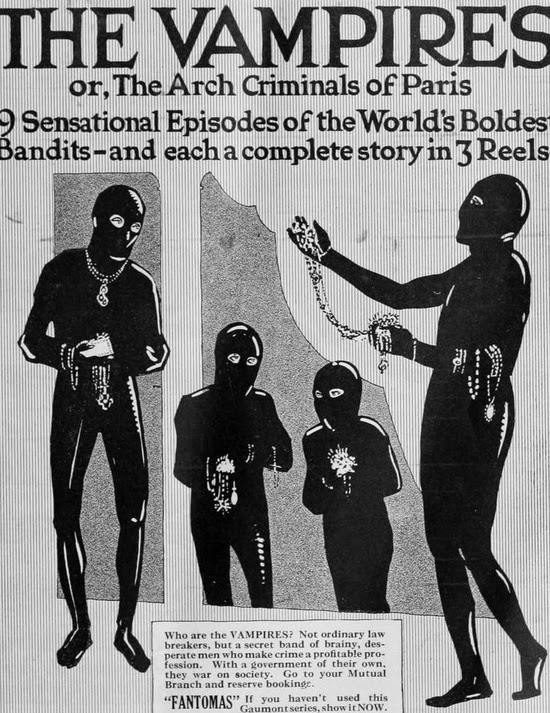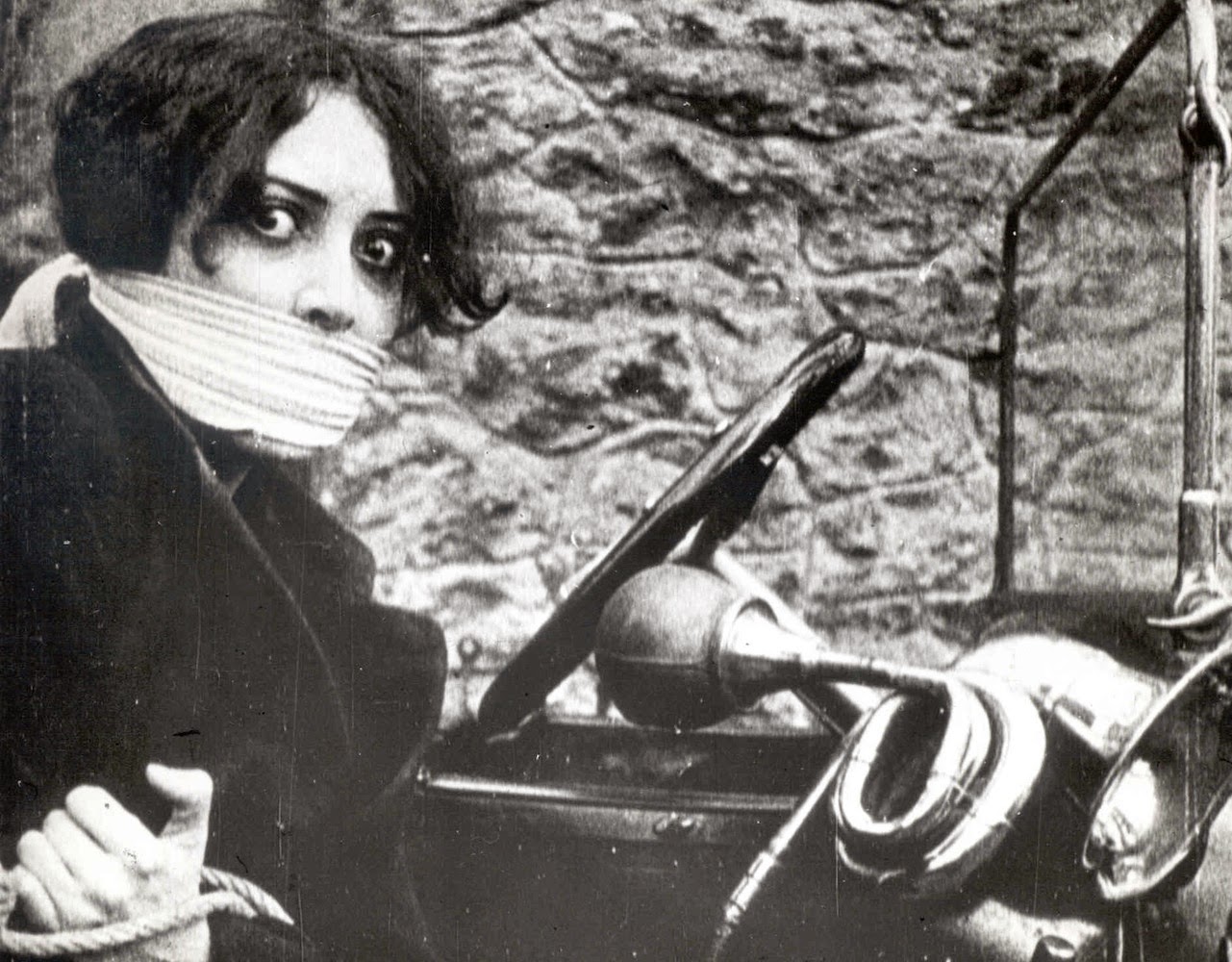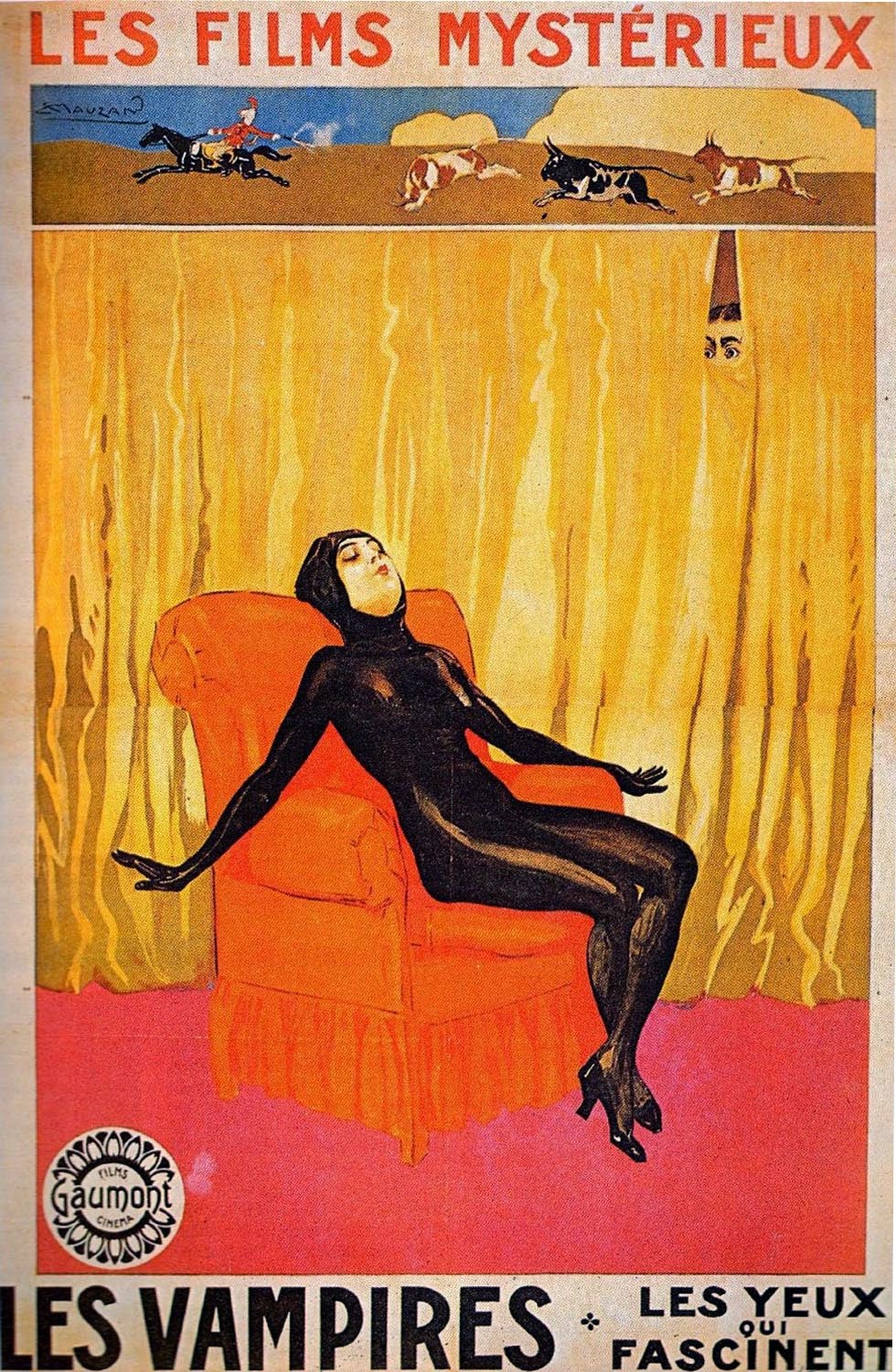One Hundred Years Ago: LES VAMPIRES strike Paris

By 1915, the French writer/director Louis Feuillade had been making films for 9 whole years, in the earliest stages of the art form. His shorts had done well enough and satisfied audience demands for light comedies, but his 1913-14 FANTOMAS series had been a major sensation. At the same time, American serials, multi-part films extending over 10 or more episodes, were landing on French shores. Feuillade was engaged to make another serial, and the result was Feuillade’s great achievement, LES VAMPIRES. To watch LES VAMPIRES now is to be struck by its pre-Griffith film grammar (though Griffith was a contemporary) and its amazingly convoluted plot and padded storyline.
The convolutions and reverses in the plot make it difficult to follow, to say the least. Like the pulp novels and magazine serializations it grew out of, LES VAMPIRES has some of the logic of a fever dream. It seems to come from the same steadily-encroaching dementia that intrudes upon a penny-a-word pulp author as he falls under the rhythmic spell of his own typewriter keys at 4 in the morning and lets his dreams take over for a page or two. The surrealists have always been attracted to pulp art, perhaps because it seems to grow and flower from the pre-symbolic unconscious. Surrealist poets Andre Breton and Louis Aragon called LES VAMPIRES “the reality of this century. Beyond fashion. Beyond taste.”
I can’t recommend a straight-through viewing of LES VAMPIRES. You may sprain your brain if you try it. But if you watch the episodes one-by-one with ample recovery time between each you will get a sense of a different cinema, one that did not, as it turned out, provide the prevailing commercial signposts for future movies, as Griffith’s did, and was too lowbrow to influence the mainstream of high art film.
Decades later, Georges Franju made films that honored Feuillade’s aesthetic legacy. His EYES WITHOUT A FACE is the most famous of these, but he also made a beautiful adaptation of Feuillade’s JUDEX (1963) and a very nice Feuillade-inflected film called NUITS ROUGE (SHADOWMAN) (1974) which shows us the basic spiritual similarities between Feuillade’s primitivism and the quick-and-dirty exploitation movies of the ’70s.
Gayle Hunnicutt in SHADOWMAN (NUITS ROUGES)
The films of Jean Rollin are also in the Feuillade tradition. Think of 1970’s THE NUDE VAMPIRE’s secret societies, masked initiations, hidden panels and animal headdresses. Rollin was also ostracized by the high culture gatekeepers because his sex and crime-filled films were loved by students and the working class. But the influence persists, it’s a little like a secret society in itself.
Masked initiation from Jean Rollin’s THE NUDE VAMPIRE
Olivier Assayas’ 1996 film IRMA VEP is a poetic essay about this cinematic strain and the madness and beauty that shadow it. It’s one of the best films of our time and it says more about Feuillade-ism than I can hope to here with words. You should see it. It is readily available.
Maggie Cheung takes to the rooftops in IRMA VEP
Here is chapter one of LES VAMPIRES. I recommend turning the sound off and watching it dead silent, but do what you like:















